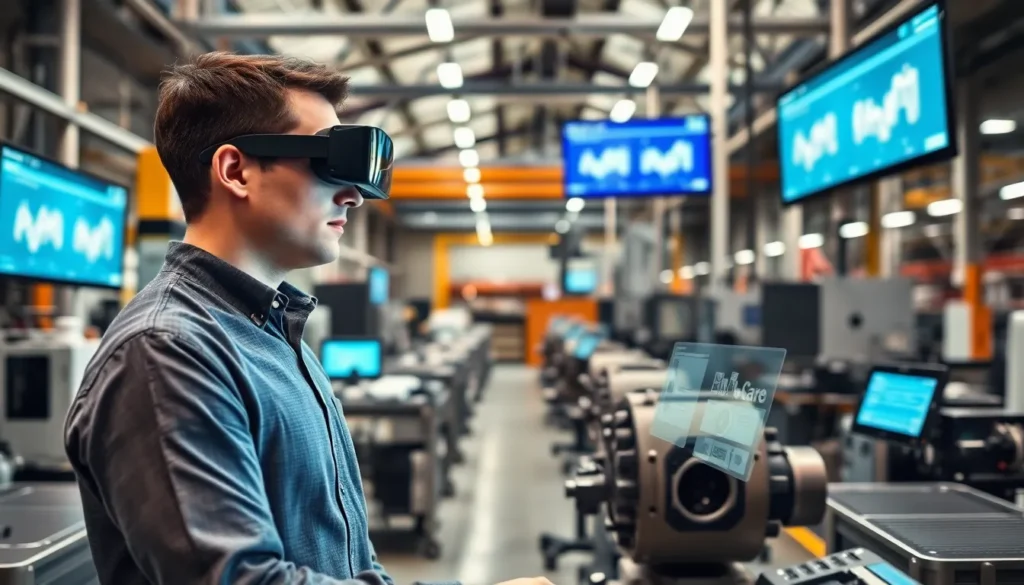Imagine flipping a regular card and suddenly seeing vibrant animations jump out, transforming mundane information into a spectacular experience. That’s not just science fiction, welcome to the world of augmented reality (AR) cards. Ever wondered how those snazzy cards can spark your imagination and revolutionize how we interface with content? Let’s jump into the fascinating realm of AR cards, uncover their technology, applications, benefits, and what lies ahead. Grab some popcorn: this is going to be an enlightening ride.
Table of Contents
ToggleWhat Are Augmented Reality Cards?

Augmented reality cards are physical cards infused with digital content that springs to life through the lens of a smartphone or AR glasses. Picture a greeting card that, when scanned, launches a 3D animation of a dancing character or a business card that displays a video introduction. These cards blend the tangible with the virtual, allowing users to view, interact with, and experience added content in real-time. With designs that can range from educational materials to marketing tools, augmented reality cards are quickly turning heads in various industries.
The Technology Behind Augmented Reality Cards
The magic of augmented reality cards lies in their sophisticated technology. At their core, these cards use computer vision and image recognition software. When a device’s camera identifies the specific markers or patterns printed on the card, it triggers an AR experience. This technology often leverages frameworks like ARKit for iOS or ARCore for Android to ensure smooth integration.
Equipped with a smartphone or a compatible device, users can unlock a world that combines computer-generated images and sounds with their physical surroundings. This seamless connection forms the heart of augmented reality, creating an immersive experience that is both exciting and functional.
Applications of Augmented Reality Cards
Augmented reality cards have established their presence across multiple sectors. In education, teachers use AR cards to provide interactive lessons, turning textbooks into dynamic learning experiences. For instance, a science card illustrating the solar system might allow students to see planets orbit in vivid detail when scanned.
Marketing professionals also harness these cards to captivate audiences. Imagine receiving a product catalog where each item breathes life through 3D visuals or animations. Also, the gaming industry has embraced AR cards, creating actionable gameplay elements that mesh physical play with digital overlays. Events and promotions can take on a new dimension as attendees scan codes to access exclusive content, making every interaction memorable.
Benefits of Using Augmented Reality Cards
The advantages of augmented reality cards extend beyond just entertainment value. They enhance user engagement significantly. By transforming the way information is presented, these cards capture and hold attention more effectively than static formats. In advertising, for example, brands can convey narratives that resonate deeply with consumers through immersive storytelling.
Also, businesses can differentiate themselves from competitors. AR cards add a unique touch to marketing campaigns, making them stand out in a crowded marketplace. They encourage users to interact, share, and eventually remember the brand. On another note, these cards also allow for measurable analytics. Companies can track user interaction, offering insights into customer preferences and behavior.
Challenges and Limitations
Even though their allure, augmented reality cards face several challenges. First and foremost, technological limitations can hinder widespread adoption. Users need compatible devices, and not every smartphone guarantees a seamless AR experience. Also, the development costs associated with high-quality AR content can present hurdles for smaller businesses.
Another concern is user experience. If instructions aren’t user-friendly, potential engagement may falter. Users might get frustrated if the technology doesn’t work as expected. Besides, privacy and data security issues could arise with interaction data being collected, leading to consumer skepticism.
The Future of Augmented Reality Cards
The future of augmented reality cards looks promising. As technology continues to evolve, we can anticipate enhanced capabilities and broader accessibility. Imagine cards that adapt to user preferences, delivering personalized experiences right out of the box. Artificial intelligence could play a role here, analyzing user behavior and tailoring content accordingly.
Also, advancements in AR hardware will likely enhance the viewing experience. Lightweight AR glasses might make physical interactions more seamless, elevating augmented reality cards from a novelty to an everyday tool. With widespread acceptance, these cards could revolutionize how we conduct business and engage with information on all fronts.





